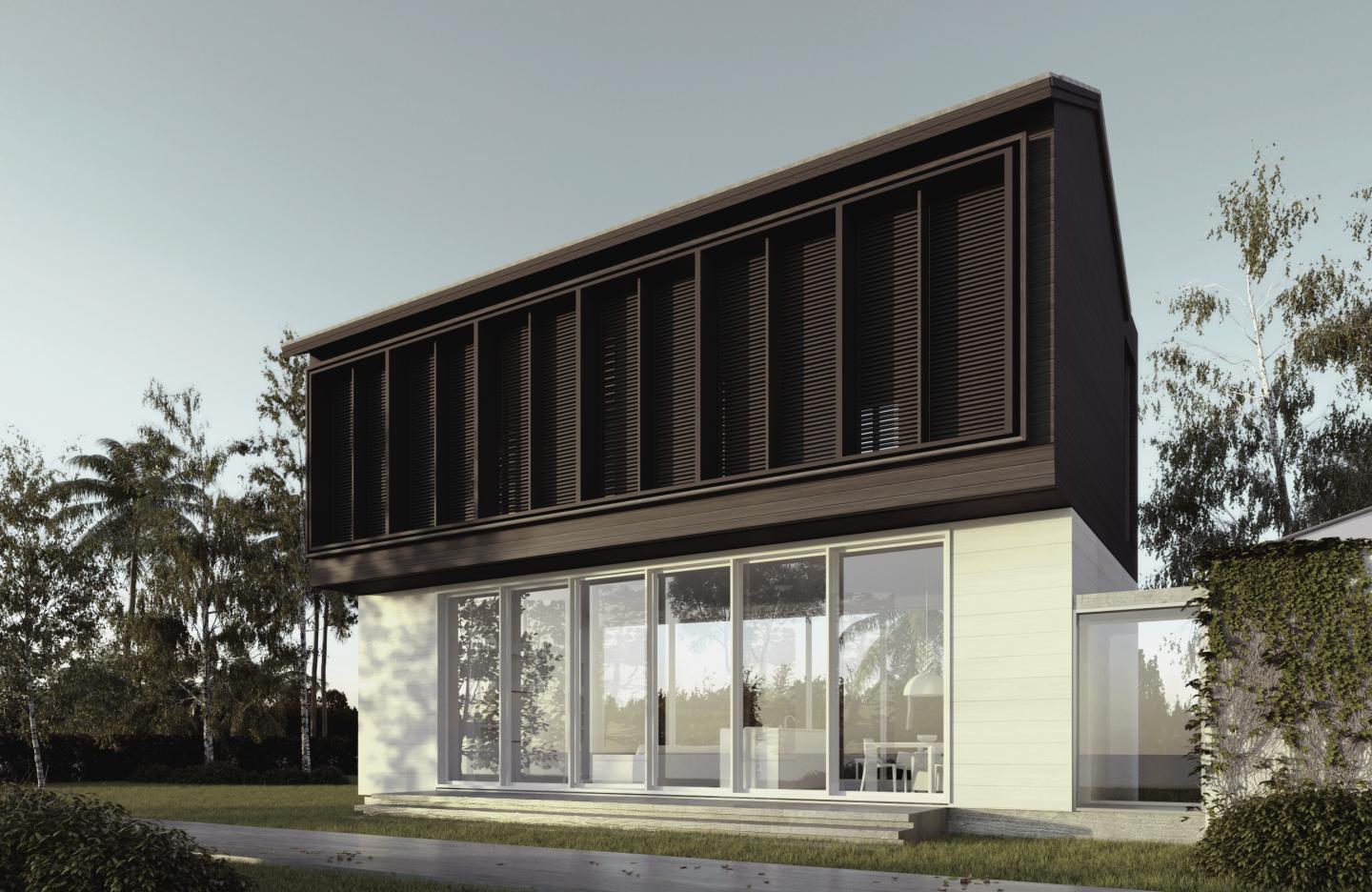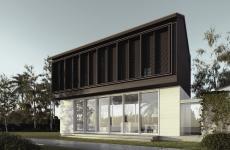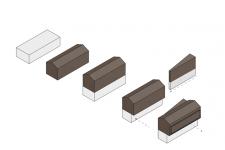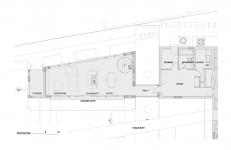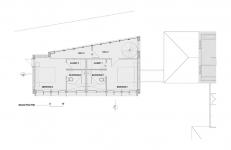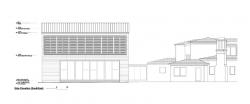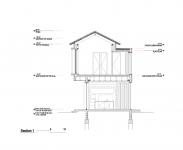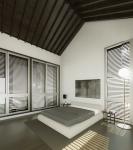RIMA House is a 1400 sq ft addition located in San Marino Island Miami Beach. Inspired in the Spanish colonial architecture of St. Augustine, Florida, the design reinterprets the traditional houses’ material and volumetric layering and its iconic balconies and merges minimalist interventions through the introduction of the term minimalist hybridization.
In terms of material layering, we focused on the combinations of materials found in the houses of St. Augustine, specifically the ones built out of tabby (masonry) and frame (wood). Additions and second stories were built out of wood while the original house and base were built out of masonry. This material expression added texture and scale to the urban fabric as well as a sense of warmth through the introduction of a natural material. In order to achieve this material expression the design proposes a white painted oak base and stained ipe top, rendering the program legible by emphasizing the public versus private distribution of the house. The white wood base defines the public spaces of the addition and provides an expansive, light atmosphere that, in conjunction with the open plan and the glass openings, extends the living spaces into the garden. The second floor’s darker wood siding defines the bedroom quarters and their servant spaces and provides for a warmer atmosphere. Conversely, volumetric layering occurs with the stacking of box and gabled volumes, laying one on top of each other to establish contrasts in form and contextual relationships. The gabled roof allows us to reference the existing 1930’s house inclined roofs. Finally, the balcony is reinterpreted as a flattened screened space which communicates the sleeping quarters with the front entry courtyard garden in the same manner as the balconies of St. Augustine’s houses communicated with the street level. As a result, minimalist hybridization is formulated by reinterpreting the well known contemporary approach of reduction of form to its essential qualities. By distancing from the homogenous application of material and formal manifestation, the term introduces a differentiated and varied strand of minimalism based on the configuration of pairs. This concept is achieved through the combination and coexistence of any two fundamental characteristics in architecture. At play in this proposal are volumetric (box vs gable), material finish (white painted oak vs stained ipe) and program (public vs private) combinations.
2016
0000
Jorge Balboa
George Rosello
Roberto Ridriguez
Eddye Traverso
